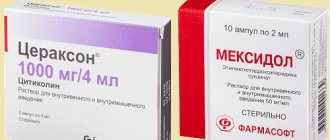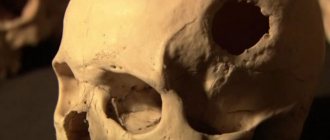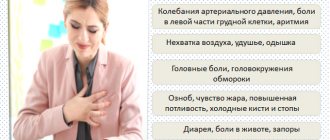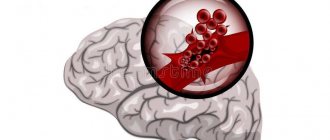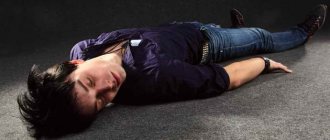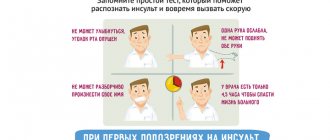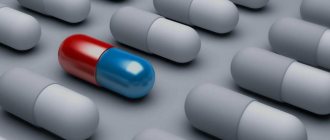What is the difference between Actovegin and Cortexin?
Actovegin and Cortexin are nootropic drugs that are neurometabolic stimulants. The use of medications can influence the functioning of the brain, they help improve memory functions and information perception. In order to choose Actovegin or Cortexin for therapy, it is necessary to conduct a comparative analysis of these pharmacological agents and determine what similarities and differences they have.
Actovegin and Cortexin help improve memory functions and information perception.
Patient reviews
Tatyana, 32 years old, Krasnoyarsk
After the research, the doctor diagnosed my child with hypertonicity. Drugs such as Cortexin and Actovegin were prescribed. The doctor advised using them simultaneously. Injections were administered intramuscularly over 2 weeks. Results began to appear after the first use. This treatment helped the child, and no side effects were observed. Upon examination by a specialist, the diagnosis was removed after treatment. I was satisfied with the treatment and the effect of these drugs.
Kristina, 40 years old, Moscow
For a long time I suffered from severe headaches and dizziness. I turned to a neurologist for help. After the examination, the doctor identified chronic fatigue syndrome, VSD and foci of a vascular nature. For the treatment of pathologies, Cortexin was prescribed with saline solution for intramuscular injection. The course of treatment was to last 10 days. After the first injection, an allergy to one of the components appeared, then the doctor replaced the drug with Actovegin. The result of the treatment was an improvement in well-being and the disappearance of headaches.
Tatyana, 26 years old, St. Petersburg
My mother was diagnosed with insufficiency in the vertebrobasilar region. Symptoms of this disease included headaches and dizziness. Against the background of this condition, memory deteriorated and vision weakened. The doctor prescribed the use of Actovegin and Cortexin in combination. The treatment was carried out for 10 days. After this, my mother began to feel much better, all signs of pathology completely disappeared. Both drugs showed good results during treatment. No side effects were observed during use.
Characteristics of Actovegin
Actovegin is a pharmacological agent whose active substance is a deproteinized hemoderivative obtained from calf blood.
The product is produced in several dosage forms:
- injection solution;
- infusion solution;
- tablet form;
- cream;
- gel for external use;
- eye gel;
- ointment.
The use of the drug helps accelerate metabolic processes in the tissue structures of the central nervous system. External use of cream, ointment or gel ensures activation of regeneration processes of damaged tissues and improvement of trophism. The active component of the drug is obtained using dialysis and ultrafiltration methods.
Under the influence of the active compound in humans, an increase in tissue resistance to hypoxia is observed, this is due to the ability of the drug to improve the process of utilization and oxygen consumption. Under the influence of the drug, activation of energy metabolism is observed.
Actovegin is able to influence the process of glucose absorption, exhibiting insulin-like activity, therefore the use of this medication by people suffering from diabetes leads to the restoration of lost sensitivity and a decrease in the severity of symptoms associated with mental disorders.
Indications for use of the drug in tablet form are:
- treatment of ischemic stroke;
- dementia;
- lack of blood flow in the brain;
- disorders caused by TBI;
- diabetic polyneuropathy;
- arterial and venous vascular disorders, manifested by trophic ulcers and angiopathy.
Administration of the drug in the form of intramuscular injections and intravenous injections to an adult is prescribed in similar cases.
Actovegin ointment and gel are used in the treatment of:
- inflammatory processes on the skin and mucous membranes;
- burns, abrasions, cuts, cracks, etc.;
- weeping ulcers, varicose origin.
Actovegin is able to influence the process of glucose absorption, exhibiting insulin-like activity, which is why the use of this medication by people suffering from diabetes.
The drug is recommended for use to activate tissue regeneration after burns, for the treatment and prevention of bedsores and to prevent skin manifestations associated with the effects of radiation.
Actovegin can be used to improve the performance of athletes.
Contraindications to the prescription of the drug are:
- oliguria;
- pulmonary edema;
- fluid retention;
- anuria;
- decompensated heart failure;
- presence of hypersensitivity.
During drug therapy using Actovegin, the patient may experience the following side effects and undesirable reactions:
- hives, swelling, heavy sweating, increased body temperature, hot flashes;
- vomiting, nausea, dyspeptic symptoms, pain in the epigastric region, diarrhea;
- tachycardia, pain in the heart, pallor of the skin, shortness of breath, arterial hypertension or hypotension;
- weakness, headaches, dizziness, agitation, loss of consciousness, tremor;
- feelings of tightness in the chest, rapid breathing, difficulty swallowing, sore throat, feeling of suffocation;
- lower back pain, pain in joints and bones.
To eliminate side effects caused by the use of the drug, symptomatic therapy is used.
If high dosages are used, the patient may develop disorders of the gastrointestinal tract. To eliminate the consequences of an overdose, symptomatic treatment is used.
All dosage forms of the drug are sold in pharmacies only after presentation of a prescription from the attending physician; the doctor must fill out the prescription in Latin.
The shelf life of the drug in tablets is 5 years; in the form of a solution, the drug is stored for 3 years.
The cost of the product varies depending on the dosage form in the range from 100 to 1250 rubles.
Action of Cortexin
Cortexin is manufactured in the form of a lyophilized sterile powder, which is intended for the preparation of an injection solution for intramuscular administration.
The drug contains a mixture of cerebral cortex polypeptides and glycine, which acts as a stabilizer.
The medication is produced in two dosages: 10 and 5 mg. A smaller dosage is designed for injections in children.
Cortexin acts directly on the central nervous system, the medication exhibits the following therapeutic effects:
- nootropic;
- neuroprotective;
- antioxidant;
- tissue specific.
Cortexin is a biostimulant consisting of water-soluble neuropeptides. All components of the biostimulator have a molecular weight not exceeding 10 thousand daltons, which allows them to penetrate the physiological barriers separating the tissues of the central nervous system and the circulatory system.
Indications for use are:
- bacterial or viral infectious pathologies of the central nervous system;
- disturbances in the blood supply to the central nervous system structures;
- TBI and its consequences;
- syndrome of diffuse brain damage of various origins;
- cerebral (suprasegmental) autonomic disorders.
The drug is highly effective when used in childhood for the treatment of cerebral palsy and delayed mental, motor and speech development.
Cortexin is a biostimulant consisting of water-soluble neuropeptides.
The drug is contraindicated if the patient has hypersensitivity to its components. The use of Cortexin for therapy in pregnant women is not recommended, which is due to the lack of information about the effect of the drug components on the body of a pregnant woman and a developing child.
It is not recommended to use the medicine during breastfeeding, which is due to the lack of research on the effect of the medicine on the composition of breast milk and the body of a nursing mother.
Potentially possible side effects during treatment with Cortexin are allergic reactions, which are caused by the presence of a high level of sensitivity to the components of the drug in the sick person’s body.
In clinical practice, cases of overdose have not been encountered.
The drug is sold only with a prescription from the attending physician. The shelf life of the medicine is 3 years.
The cost of the medication, depending on the concentration of the main active ingredient, ranges from 700 to 1200 rubles.
Gliatilin and cerebrolysin after stroke
- Are drugs analogues?
- Is it possible to replace one medicine with another?
- Which medicine is safer and has fewer side effects?
- Why did the doctor change the drug and is he right?
Based on research data, Cerebrolysin and Gliatilin are almost the same.
But do not forget that these drugs contain different active substances. Therefore, be sure to consult your doctor. It is possible that some of them may not be suitable for your therapy.
Comparison of the effectiveness of Gliatilin and Cerebrolysin
The effectiveness of Gliatilin is quite similar to Cerebrolysin - this means that the ability of the drug substance to provide the maximum possible effect is similar.
For example, if the therapeutic effect of Gliatilin is more pronounced, then using Cerebrolysin even in large doses will not achieve this effect.
Also, the speed of therapy - an indicator of the speed of therapeutic action - is approximately the same for Gliatilin and Cerebrolysin. And bioavailability, that is, the amount of a drug reaching its site of action in the body, is similar. The higher the bioavailability, the less it will be lost during absorption and use by the body.
Comparison of the safety of Gliatilin and Cerebrolysin
The safety of a drug includes many factors.
At the same time, it is higher for Cerebrolysin than for Gliatilin. It is important where the drug is metabolized: drugs are excreted from the body either unchanged or in the form of products of their biochemical transformations.
Metabolism occurs spontaneously, but most often involves major organs such as the liver, kidneys, lungs, skin, brain and others.
When assessing the metabolism of Cerebrolysin, as well as Gliatilin, we look at which organ is the metabolizing organ and how critical the effect on it is.
The risk-benefit ratio is when the prescription of a drug is undesirable, but justified under certain conditions and circumstances, with the obligatory observance of caution in use. At the same time, Cerebrolysin has fewer risks when used than Gliatilin.
Also, when calculating safety, it is taken into account whether only allergic reactions occur or possible dysfunction of the main organs. In other matters, as well as the reversibility of the consequences of the use of Cerebrolysin and Gliatilin.
Comparison of contraindications of Gliatilin and Cerebrolysin
Based on the instructions. The number of contraindications for Gliatilin is quite similar to Cerebrolysin and is small. This is a list of symptoms with syndromes, diseases, various external and internal conditions under which the use of Gliatilin and Cerebrolysin may be undesirable or unacceptable.
Comparison of addiction between Gliatilin and Cerebrolysin
Like safety, addiction also involves many factors that must be considered when evaluating a drug.
So, the totality of the values of such parameters as “o syndrome” for Gliatilin is quite similar to the similar values for Cerebrolysin. Withdrawal syndrome is a pathological condition that occurs after the cessation of intake of addictive or dependent substances into the body.
And resistance is understood as initial immunity to a drug; in this it differs from addiction, when immunity to a drug develops over a certain period of time. The presence of resistance can only be stated if an attempt has been made to increase the dose of the drug to the maximum possible.
At the same time, Gliatilin has a fairly low value of the “syndrome”, however, the same as Cerebrolysin.
Comparison of side effects of Gliatilin and Cerebrolysin
Side effects or adverse events are any adverse medical event that occurs in a subject after administration of a drug.
Gliatilin has almost the same level of adverse events as Cerebrolysin. They both have few side effects.
This implies that the frequency of their occurrence is low, that is, the indicator of how many cases of an undesirable effect of treatment are possible and registered is low.
The undesirable effect on the body, the strength of influence and the toxic effect of Gliatilin are similar to Cerebrolysin: how quickly the body recovers after taking it and whether it recovers at all.
Comparison of ease of use of Gliatilin and Cerebrolysin
This includes dose selection taking into account various conditions and frequency of doses. At the same time, it is important not to forget about the release form of the drug; it is also important to take it into account when making an assessment.
The ease of use of Gliatilin is approximately the same as Cerebrolysin. However, they are not convenient enough to use.
The drugs are compiled by experienced pharmacists who study international research. The report is generated automatically.
Last update date: 2019-09-19 05:59:39
source
Fighting ZRR. Part five. Stunning.
Boy, 3 years 7 months, mental retardation, ADHD, dysarthria, MMD.
Gliatilin was prescribed together with cennarizine immediately after a course of Cerebrolysin. For a month, 1 capsule in the morning and at lunch. The child did not have any problems swallowing capsules, because... so many medications have already been taken. ((((
So, when he started taking Gliatilin, the child spoke in simple sentences. There was no thinking, no reasoning, no detailed speech, everything that a child of 3 years and 7 months should have.
The capsules were taken almost immediately after the Cerebrolysin/Actovegin injections. I take breaks between courses for about a week to give at least a minimal rest to the body from the drugs, because...
we, I believe, had an enhanced course, in which one drug was replaced by two or three others for 11 months. And if you consider that during this year the child additionally suffered from acute respiratory viral infection, giardia was treated with a bend of the gallbladder plus.
In general, it was a difficult year for us.
While taking Gliatilin, the boy had no side effects, no allergies (until he was 3 years old he had Atopic Dermatitis) or increased excitability (the child has ADHD and severe hysterics, so if the drug upsets him even more, I stop giving it) for us this is very important.
Source: https://tepcontrol.ru/gliatilin-i-tserebrolizin-posle-insulta/
What is the difference and similarity between Actovegin and Cortexin?
Actovegin is made from the blood of a young calf. To produce Cortexin, the cerebral cortex of a calf or pig is used.
Both drugs have similar indications for use.
The use of Cortexin allows one to cope with dyscirculatory encephalopathy, and Actovegin can be used in such a situation as an adjuvant.
Cortexin can be used to treat infants with central nervous system injuries. The use of Cortexin allows you to quickly cope with chronic fatigue. The simultaneous use of drugs in such a situation may cause the development of an allergic reaction.
Actovegin is approved for use during therapy in pregnant and lactating women, and Cortexin is prohibited for use in this category of patients.
What is better to take - Actovegin or Cortexin?
Clinical studies have shown higher effectiveness of Cortexin in the treatment of hypoxic or traumatic damage to central nervous system tissues. Actovegin is preferable to use in the treatment of vegetative-vascular dystonia, but the ability of the medication to provoke the appearance of neuro-reflex overexcitation should be taken into account. Cortexin does not have this disadvantage.
If the patient has a tendency to hysterics and nervous attacks, it is recommended to give preference to Cortexin.
The use of nootropic drugs in childhood
The latest generation of nootropics is highly effective. However, these drugs are used very carefully in children. For example, Pirocetam is an excellent remedy for bringing patients with alcohol or drug addiction out of a coma. For children with less serious pathologies, it is better to choose another nootropic drug, since a powerful nootropic can provoke agitation and poor sleep. This occurs due to the rapid acceleration of metabolism in brain cells, which occurs after the administration of a strong nootropic.
The administration of nootropic drugs to children is permissible in severe cases, but the drugs can be difficult to tolerate by the child’s body. This suggests that a child should not choose a nootropic drug without a doctor’s recommendation.
Pediatrics allows the administration of nootropic drugs for the following pathologies:
- mental retardation;
- mental and speech delay;
- cerebral palsy;
- lack of attentiveness;
- consequences of birth injuries and hypoxia;
Doctors carefully select the drug, taking into account all the characteristics of the body and the clinical picture of the children. Actovegin and Cortexin showed good results in therapeutic therapy. Sometimes a specialist decides on complex treatment. The medications are completely compatible, but it is not recommended to inject children at the same time. Typically, the treatment regimen is designed to alternate administration.
Doctors' opinion
Ivchenko E.K., psychotherapist, 40 years old, Tula
Cortexin is well tolerated by most patients; the advantage is that it can be used from birth. It gives a good effect in complex therapy for diseases such as speech disorders, various brain lesions, improves brain function, learning processes and memory, concentration, and in some places there is an increase in the degree of resistance to stress.
In children of early and primary school age it can cause overexcitation, increased tearfulness, nervousness and emotional tension.
Kuztsov P. Yu., psychiatrist, 54 years old, Ufa
Cortexin is an original nootropic drug. It is used both in monotherapy and in complex treatment in adults and children. This drug improves higher brain functions, learning and memory processes.
Due to the fact that the drug is available only in injections, it is difficult to administer to children.
Kudryashov S.V., neurologist, 37 years old, Samara
Actovegin is a good vascular drug that improves central and peripheral circulation and has a healing effect. I use injectable forms of the drug for vascular and traumatic diseases of the brain and pathology of the peripheral nervous system. There are practically no contraindications.
General pharmacological parameters
Both belong to the group of nootropics or psychostimulants. Drugs of this nature are prescribed to maintain the functioning and stimulation of the central and nervous systems.
Medicines are of animal origin.
The active ingredient of Cortexin is a polypeptide bioregulator; it is extracted from the brain cortex of cattle or piglets up to one year old. Excipient glycine. Actovegin works using serum from the blood of calves.
These medications are prescribed to patients with disorders:
- traumatic brain injury;
- cognitive disorders;
- encephalopathy;
- astheniaptoma;
- acute and chronic encephalitis;
- cerebrovascular accident;
- epilepsy;
- different forms of cerebral palsy.
These medications are actively used in pediatrics. With their help, disorders such as delayed speech and psychomotor development, cerebral palsy (drug therapy is carried out), memory and thinking disorders, and learning impairment are treated.
According to doctors, the work of the central and autonomic systems, conductivity in synapses and tissues is normalized in patients, attentiveness and the ability to concentrate are strengthened. After treatment with this drug, a prolonged effect is observed even after therapy is stopped. The effect of Actovegin is almost the same. The only thing in which it may differ is the speed and intensity of the effect.
Both have virtually no contraindications for use.

